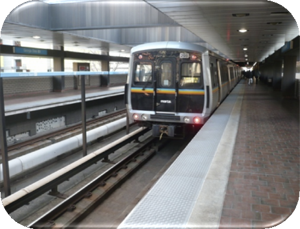
 Road and Railway Road and Railway
Roads and railways contribute most of the noise in and around a city. Roads alone contribute the majority of noise twenty-four hours a day. The problem is that the noise source is a line not a point source, and is more like a cylinder of noise than a sphere of noise so car noises only decrease by 3db for each doubling of distance from the source. The source is measured from approximately 2.5 meters above the road surface at receiver points of interest. In general, road noise from the frictional contact between the vehicle and the ground and air will exceed the engine noise of a vehicle at speeds higher than 60 km/h. Exceptions will exist at intersections, hills, and changes in engine speed or power exerted. Barriers have been around and modified for decades. Some of the variables that affect the outcome of traffic barriers are the line of sight (transmitted path), Angle of incident, related to the (diffracted path), and the indirect path of transmission (reflected path) to the receivers of the noise,
|
 Acoustiblok "All Weather Sound Panels" can be an excellent resolve for many types of issues involving roadway and railway noise. The panels can be implemented in an infinite configuration of height and length. The panels are impervious to the elements; hurricane tested at over 434 kp/h (3011ksm), mass and absorption factors, and can be a permanent or temporary solution.
Railway noise can also be treated in a similar manner. The problem is there may be tighter constraints in and around train stations and rail lines. Due to thickness of our panels, it makes for an easy resolve near the tracks. Our panels can be tied to a railing, attached to an existing wall to absorb some of the more critical and annoying high frequencies from train motor spool up, and can easily follow a twisty track along the country side.
Acoustiblok "All Weather Sound Panels" can be an excellent resolve for many types of issues involving roadway and railway noise. The panels can be implemented in an infinite configuration of height and length. The panels are impervious to the elements; hurricane tested at over 434 kp/h (3011ksm), mass and absorption factors, and can be a permanent or temporary solution.
Railway noise can also be treated in a similar manner. The problem is there may be tighter constraints in and around train stations and rail lines. Due to thickness of our panels, it makes for an easy resolve near the tracks. Our panels can be tied to a railing, attached to an existing wall to absorb some of the more critical and annoying high frequencies from train motor spool up, and can easily follow a twisty track along the country side. Click here to download PDF file with architectural specifications & acoustic data Standard sizes
|
| AES | ASA | INCE | AIA | NRC-CNRC | MAC | SCANTEK |